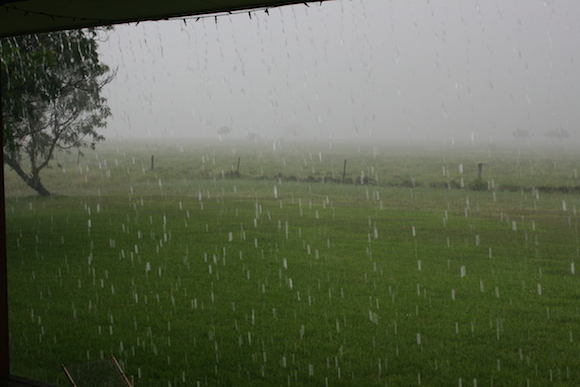Teaching an old dog new tricks
Host: Eversleigh Station
Written by Jenny Underwood – Owner, Eversleigh Station.
They say that “Life Begins at 40”. I still had one year to go to reach that milestone, but certainly my life changed completely, and for the better, in 1998 when I resigned from the Department of Education and became a full-time grazier. I had been a teacher for 18 years and now, all of a sudden, I was back on “L” plates and learning about my new career from scratch. My classroom became the wide open spaces of “Eversleigh”, our home block and “Aireworth”, an additional block about 80km north-west of home. My students were now four-legged creatures – Droughtmaster cattle and Merino sheep.
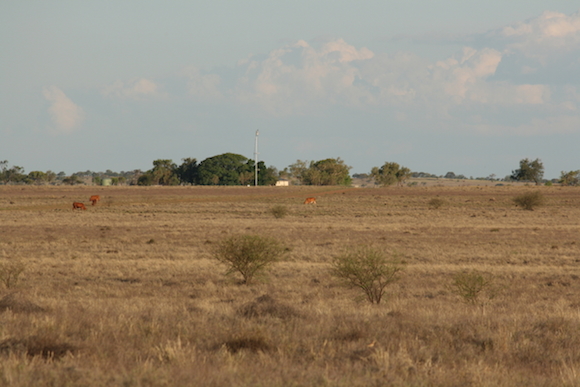 “Eversleigh” Station homestead. The large tower is the radio microwave tower for our telephone.
“Eversleigh” Station homestead. The large tower is the radio microwave tower for our telephone.
As soon as I walked out the door I was at my workplace, seven days a week. Unlike my city friends, I didn’t have to battle traffic jams to and from work; I had no noisy or nosy neighbours and each morning I awoke to the beauty of nature in the form of a glorious sunrise with each day ending in a spectacular sunset – you can’t get better than that!
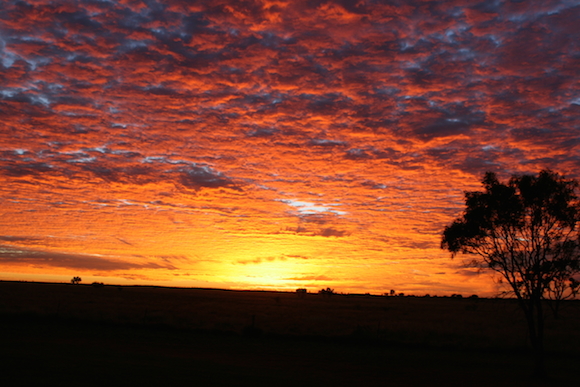

I had a whole new daily routine and a totally different lingo to learn especially when we were still running sheep. The only way I could tell the difference between a wether (a castrated male sheep) and a ewe was that they ran in separate paddocks and eventually a ewe, if the ram had done its job, would have a lamb with her. The sheep had to be jetted for fly strike and after shearing the sheep were drenched in a shower dip to prevent lice.
In Spring the sheep were brought in to be crutched – the wool was cut away from around their backsides and eyes and the wethers also were crutched around their “pizzles’ – all to prevent flystrike and wool blindness and to get rid of any stained wool. Towards the end of the year the sheep were shorn and lambs were marked and mulesed. We sold the last of the sheep in 2003 and to be honest, I don’t miss running sheep but I do miss having mutton to eat!

We went on weekly “water runs” so that polypipe lines and water troughs could be checked and cleaned out. Once I was confident enough to find my way around the property I did these runs on my own. When I do a water run, Roger is never sure when to expect me home; I take a lot longer than he does because I spend most of my time chatting to the cattle and taking photographs. My sister, to this day, is still intrigued when I say that I am doing a lick run – putting out a dry supplementary urea-based mix which enables the livestock to utilise the pasture better, especially when the quality of the feed is poor.
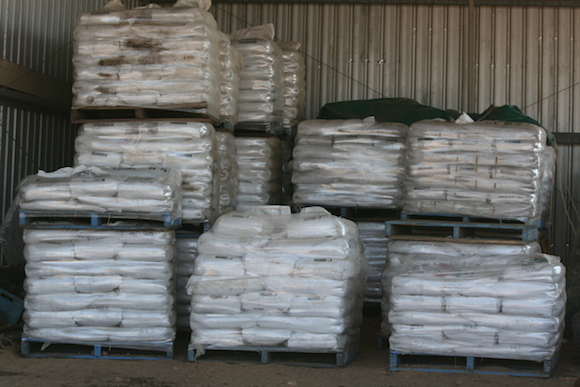
Mustering is done on a four-wheeler bike as I could never quite confidently master a two-wheel motorbike at my “mature” age. This is one of the few times that I decided that you can’t teach an old dog new tricks. Apart from when the days are really hot, dry and dusty, mustering can be very enjoyable. It gives me time to take a good look around and I am able to switch off – no computers, no phones to distract me – and I can also forget about all the housework and paperwork waiting at home for me!
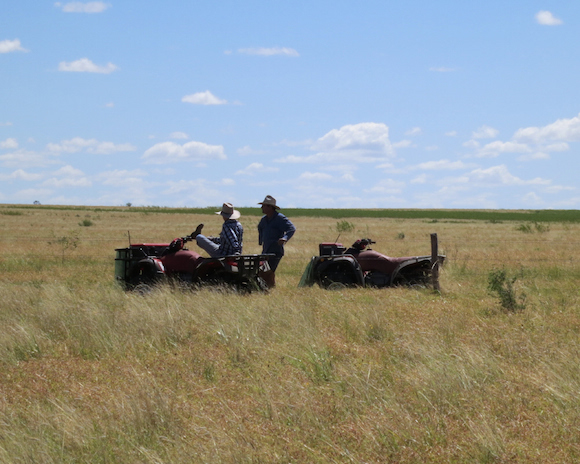
Moving to inland Queensland, I began to appreciate just how big rural Australia is. Geographically, we live very close to the centre of Queensland, 100km south of Hughenden and 220km north of Longreach. Our nearest shopping town is Hughenden and the nearest major centre is Townsville about five hours away. Eversleigh is approximately 18,000 hectares with Aireworth an additional 6,000 hectares, a total of just over 59 000 acres for the pre-metric readers.
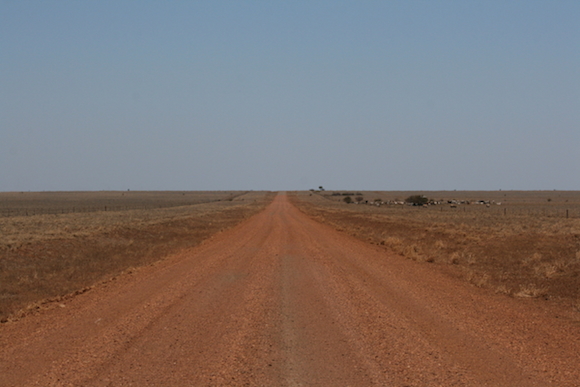
We breed Droughtmasters and have done so for over 40 years. The Droughtmaster is an Australian breed of beef cattle developed in the early 1960s and well suited to the conditions of Northern Australia. Between the two properties we generally run about 1700 breeders (cows) and their progeny (calves and weaners). Our stocking rate is 1 beast per 20 acres (1:8 hectares) so when the seasons are in our favour that equates to approximately 3000 head.

Our country type is predominantly open Mitchell grass downs with flood out channels on our western side. Our creek and river systems flow south, joining into the Cooper Creek catchment system which eventually ends up in Lake Eyre in the centre of Australia. Much of our country is flat – millions of years ago the area was part of the Inland Sea and dinosaurs reigned supreme. Our average rainfall is around 450mm per year (18 inches in the “old scale”). The seasons are totally unpredictable. Within a short period of time we experienced our highest and lowest annual rainfall figures. In 2000 we measured 950mm only to measure 161mm two years later.
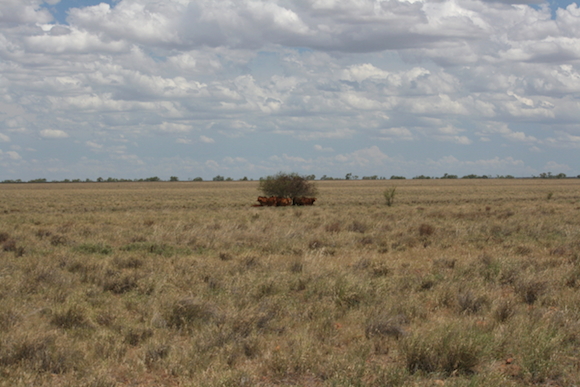
Most of our rain falls in summer during the wet season generally with storms starting in December till about March. Well, that is what it is supposed to do, but the last two years have been very challenging as the rains haven’t arrived and much of inland Queensland and NSW have been in drought. Last year we measured just under 200mm for the year, and most of that fell in the first two months of 2013; so far this year we have had 180mm in varying small falls.
In a proper Big Wet we can be isolated for many days and even weeks. We have a large coldroom which means we can store cold and perishable goods for quite a while and a large pantry enables me to buy a lot of groceries in bulk. I have learned that just about any foodstuff can be put into a deep freezer even when the label says “unsuitable for freezing”! Even after the rain has stopped it can be some time before we are able to move around in a vehicle and get to town. On occasions when it has been a prolonged wet, the local Council has organised for food and medical drops to be delivered by helicopter.
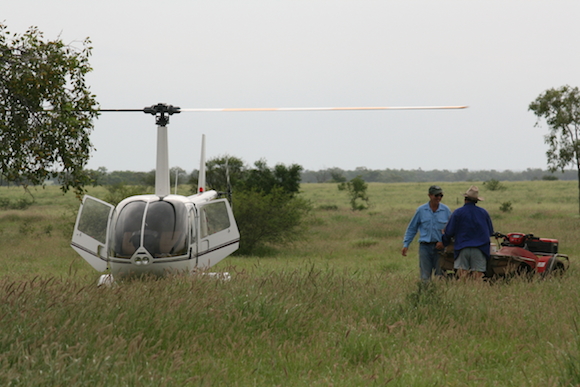
One of the toughest realities I have had to learn is to accept that our lives and livelihoods are totally controlled by the weather. While there is very little we can do to manipulate the weather we do our best to prepare for unfavourable seasons and whatever nature wants to throw at us. Floods can tear down fences and wash away stock standing in its path. Locust plagues can devastate your pasture within a matter of weeks or even days. Out of season showers and misty days can turn dry feed into black, mouldy stubble in the blink of an eye. Bushfires started by lightning can roar through your country killing and maiming stock as well as destroying valuable grass. Drought is a slow and insidious beast gradually sorting out the weak from the strong.
At the present time we are entering our second year of a poor wet season. The vital rains have once again failed to materialise. As all primary producers do, we take the good seasons with the bad and careful planning and at times, drastic measures, have to be taken to ensure that the stock are kept in good order until the rains remember to come again.
